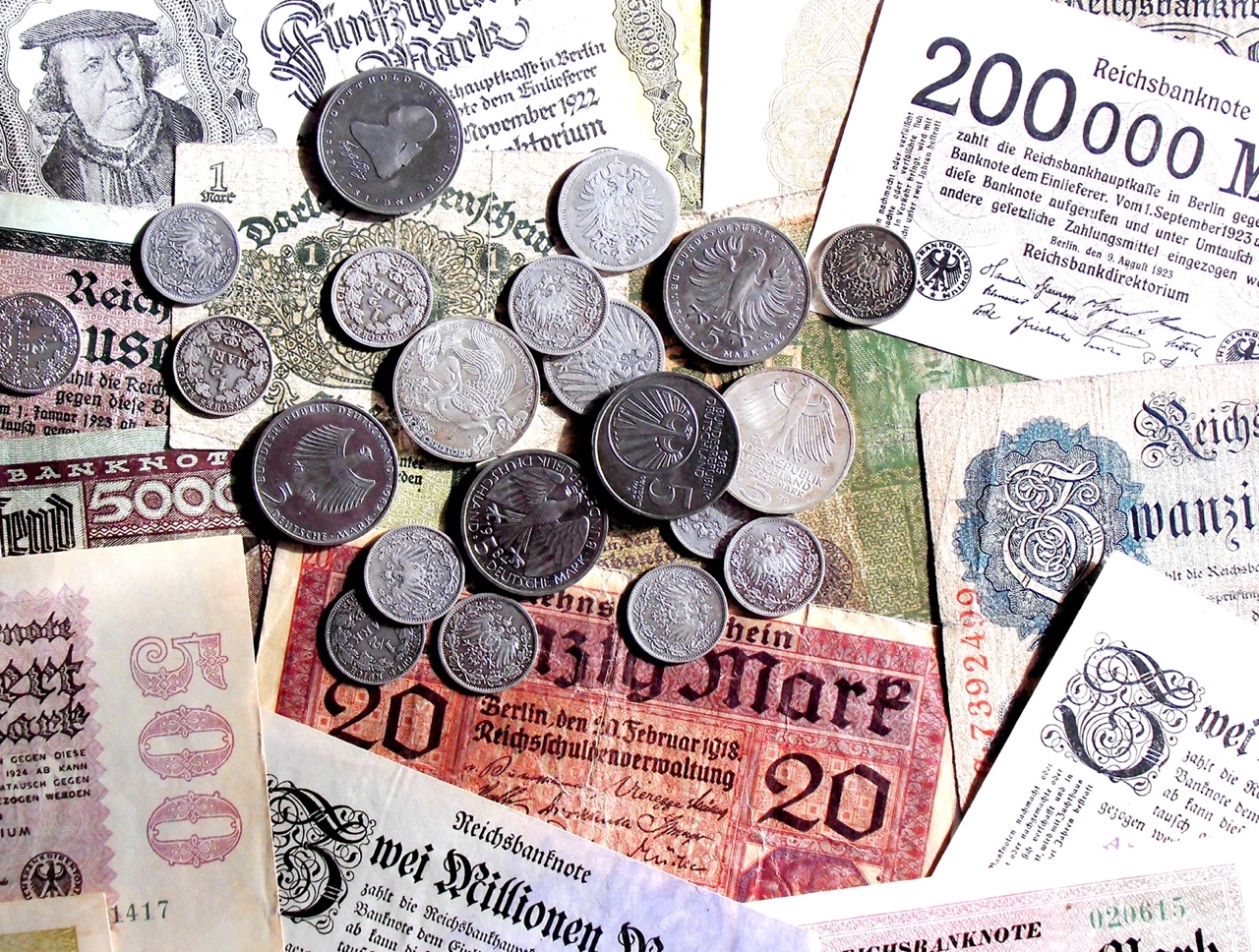The beginning of the Russian attack on Ukraine in 2022 ushered in a new era in several ways. Economically, many European countries experienced a spike in gas prices as a consequence of their yearlong dependence on Russian gas. Among other causes and crises, “post-Zeitenwende” Germany suddenly found itself having to cope with unusually high inflation. But were really all Germans struggling in the same way?
A spectre to economists and politicians, high inflation is associated with many problems. As for its social consequences, rising prices are a commonly overlooked yet great issue for economic inequality. Ever more in 2022 and 2023, energy-price-driven inflation has put a significant over-proportional burden on low-income households globally.
In Germany, the parliament responded to spiking prices with the so-called “Energy Price Brakes” (“Energiepreisbremsen”). The two regulations effective since January 2023 should provide relief by capping the prices of gas, district heating, and electricity for a distinct share of private households’ previous year’s consumption. But were the Energy Price Brakes also able to tackle the distributional consequences of inflation? In other words, were they distributively just?
How inflation leads to inequality
Inflation almost inevitably deepens existing economic inequalities, especially in combination with rising energy prices. Not only is the inflation rate itself higher for low-income households because of their expenditure structure, but they also have a harder time dealing with the consequences of inflation.
A common reason for low-income households’ inflation rate to be effectively higher is energy and food spending, making up a greater share of their income. While inflation is often driven by price hikes for these goods, this is especially severe in post-Zeitenwende Germany: In 2022, the household-specific inflation rate differed by 2.2 percentage points between high-income single households (6.6 %) and low-income family households (8.8 %).
In addition to this disparity, high-income households have more of a buffer against the effects of high inflation. High-income earners are usually in a better situation to ask for a wage increase compared to those in more precarious jobs prone to layoffs in times of economic hardship. More importantly, the rich gain a larger part of their income from investment and entrepreneurial activities. Not only do those channels adapt more quickly to inflation, but some companies were even able to increase their margins substantively in 2022 and 2023. Social benefits, pensions and the minimum wage on the other hand are lagging in their adaption to higher prices.
Additionally, savings help richer households maintain their standard of living even during high inflation, an option the poor often do not have. A similar observation applies to real assets, such as housing, which are more resilient to inflation than cash savings. Finally, by consuming more high-quality goods, high-income households can save or substitute away from expenditures more easily than low-income households that already rely on budget items in low quantities.
The Energy Price Brakes were definitely introduced in a situation where the duality of high inflation and high energy prices posed an over-proportional burden on low-income households compared to those with higher income. We might even call it a “redistribution in time lapse”.

The Energy Price Brakes as a possible solution
To recap the relief package’s functioning, the Gas and Heating Price Brake (“Gas- und Wärmepreisbremse”) for private households and small and medium-sized enterprises capped the price of gas at over 12 Cent per kilowatt hour (kWh) for 80 percent of previous year’s consumption, respectively. For district heating, the price cap was 9.5 Cent per kWh. All consumption above this threshold fell under the market prices. Contrary to most other price caps, the difference between the market price and the capped price was automatically covered by the federal government.
The Electricity Price Brake (“Strompreisbremse”) worked similarly, limiting the price to 40 Cents per kWh for 80 percent of previous year’s consumption. While it only applied below an upper bound of a yearly consumption of 30,000 kWh, it was rather a method to distinguish between smaller and bigger enterprises as it is more than tenfold of an average German household’s consumption.
Coming back to the matter of distributive justice, it’s almost common sense that we operate in an economic and social system which already inherits inequalities. If we still want to judge the Energy Price Brakes’ justice in an unjust setting, the initial question needs to be slightly modified. It is not whether the relief package resolves all unevenness but whether it itself creates more inequality or insufficiently resolves the distributional issue it is supposed to tackle.
In favour of the Energy Price Brakes’ equalising effects, they didn’t formally discriminate against any type of income group. More importantly, they were most likely to reduce inflation: The Gas Price Brake alone is estimated to have lowered inflation in 2023 by 0.25 to 0.4 percentage points. As inflation poses an over-proportional burden on low-income households, lower inflation over-proportionally benefits them compared to the initial situation.
Similarly, the direct relief of extraordinarily high energy expenses made them instantly better off, provided prices were above the Brakes’ thresholds. As high energy prices make up a greater part of low-income household’s expenditures, they profited more from the subsidies in relative terms.
However, high-income households typically consume more energy than low-income households. The amount falling under the threshold of 80 percent of the previous year’s consumption was subsequently also greater for the rich in absolute terms. Therefore, wealthier households are likely to have profited more in absolute terms. Moreover, given that high-income households already use more energy, they have greater capacity to save and avoid paying higher market prices. So while the Energy Price Brakes might not have created significantly more inequality, they definitely failed to sufficiently tackle the distributive issue caused by inflation. But does this already imply the Energy Price Brakes were unjust?
What Rawls’ narrow difference principle can tell us
The narrow difference principle derived from John Rawls work provides one way to evaluate the Energy Price Brakes’ distributive justice. In this context, it asks if for any alternative policy response or modification of the Price Brakes, the position of the least advantaged group (low-income households) would be more (or even maximally) advanced.
First, it seems clear that immediate relief from extraordinarily high energy costs in the short run made both the less and more advantaged better off than the absence of the intervention. As the situation of the least advantaged was relatively more advanced, one could even argue that this sufficiently counters the initial inequality.
So what about the concern that high-income households still benefit more from subsidies in absolute terms as they already consume more energy? While the original Rawlsian conception is said to be directed towards this absolute position, some derivatives argue that absolute and relative advantages should be weighed against each other.
But even if the relative advantage is more important, observing an absolute advantage for the already more advantaged can give us an intuition that perhaps not the optimal solution has been chosen. In other words, it seems suspicious that an intervention that maximally advances the position of the least advantaged compared with other alternatives would profit another group more in absolute terms.

In fact, there are several alternatives to the Energy Price Brake worth considering. Even a relatively simple modification of the Price Brakes could have already improved the equality of distribution: The Expert Commission for Gas and Heating (“ExpertInnen-Kommission Gas und Wärme”), which originally suggested the Energy Price Brake, themselves proposed an effective ceiling. This would have lowered the amount of subsidised energy for high-consumption households, making the measure more distributively just and fiscally economical. While notably this could have also affected large low-income households, an effective ceiling would have changed the absolute position of the more advantaged, with the capacity to improve the situation of the less advantaged.
On another note, many scholars recommend abandoning the policy of subsidising energy altogether and rather compensating private households via direct payments irrespective of their consumption. While this might seem odd at first, taxation could mediate a socially desirable distribution. At the same time, some benefits of the Energy Price Brake, such as its immediate impact, would be preserved.
While this list of alternatives to the Energy Price Brake is not exhaustive, it already indicates that alternatives that benefit the poor more are available. Returning to the narrow difference principle, the position of the least advantaged group could have been advanced for these alternative policy responses or modifications of the Price Brakes.
Lessons for the future
This leaves us with the realisation that the Energy Price Brakes were indeed a distributively unjust response to inflation. Even though the Brakes have now expired at the end of 2023, this conclusion still provides some lessons for the future.
In Germany as well as the rest of the world, we currently experience many economic and societal hardships with the next crisis just around the corner. To address these issues, fiscal policy instruments such as the Energy Price Brake will most likely be used more often in the near future. The alternatives to the Energy Price Brakes presented here can give an impression of what could be possible if there was a will to effectively tackle inequality and make it a priority in designing these measures. Consequently, concerns about distributive justice should not always be regarded afterwards, but before interventions are necessary. The time to begin working on new solutions is now.

Leave a Reply